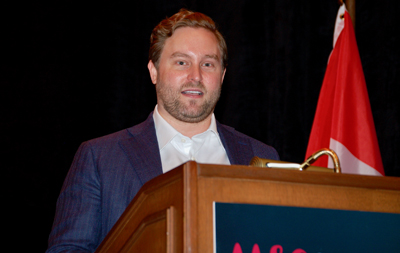During consultant Vince Romans’ annual presentation on the state of consolidation within the collision repair industry at the MSO Symposium in November, he noted there were currently 19 private equity firms or other investor groups backing 14 multi-shop operations.
Those MSOs have combined annual revenues of about $13 billion. That represents about 34% of the industry’s total revenues of $38.6 billion in 2021, according to Romans’ data.
“That’s not going to stop,” Romans said. “I get calls from private equity firms every week, looking to know about this industry, looking to know where they should invest. And that will continue.”
When the additional MSOs with $10 million or more in annual revenues are added in, multi-shop operators accounted for about 43.6% market share, he said, meaning more than half---about 56%---of total industry revenues are still captured “by individual or smaller operators.”
But that is going to flip in the coming years, Romans predicted. As he does most years at the annual symposium, he shared two five-year forecasts: A “more likely” scenario in which MSOs control 55% of the total collision repair market revenue in 2026, and what he call his “more aggressive” forecast, “based on dynamics that we don’t have a lot of control over," showing MSOs capturing more than two-thirds (67.7%) of the market.
In either case, he doesn’t foresee any short-term end of business for smaller operators.
“Just like in other industries, it will take a couple more decades to get to scale where the smaller shops no longer exist,” Romans said.
By Romans’ count, there are more than 100 MSOs with annual sales of $20 million or more, and they are certainly most interested in the more than 400 with revenues above $10 million.
“That’s where consolidation will happen, just like in the hardware industry, just the like in the drug industry, which took decades to consolidate,” Romans said. “The collision repair industry will also take decades, but it will happen. So for those who decide to stay in it, you have to decide how you can be successful while deciding whether there’s an exit plan for yourself in the future."
What’s Driving the Labor Shortage
Another speaker at the MSO Symposium, Andy Challenger, pointed to three key factors creating the current labor shortage in the U.S.
Challenger, senior vice president of a Chicago-based firm that companies hire to help their laid-off employees find new positions, said the participation rate---the number of Americans age 16 or older either working or looking for work as a percentage of the population---has been declining over the past 20 years. At 62.3% currently, that’s down from 63.4% just prior to the pandemic, which equates to “about 3 [million] to 4 million people missing from the workforce.”
Challenger said three trends contribute to that. First, more Baby Boomers are retiring, and early retirements accelerated in 2020.
Second, while immigration numbers are back to pre-pandemic numbers, “what we haven’t made up for yet is the decrease we saw in 2020 and 2021, when we saw a real dip during the depths of the pandemic.” There are currently 1.7 million fewer new immigrants in the country than there would have been if the numbers had stayed on the trendline in 2019, he said.
Third, challenges and costs associated with care for children and the elderly have led more households to decide to get by with only one parent working.
The tight labor market could change if there’s a recession, and Challenger said his company’s surveys of employers last fall indicated about one-third say they were currently preparing for a recession.
“It’s not an extremely alarming number, but it’s more than nothing,” he said. “I think almost certainly it will be a cooler job market a year from now.”
Because his firm, Challenger, Gray & Christmas, works to find new positions for laid-off workers, Challenger said he has regular data on what people most want from their employer. He said the ranking of employees’ priorities shifts. Last fall, for example, his company’s survey found "flexibility" remains the top priority, but “empathetic leadership” has risen to the No. 2 spot, higher than in the past.










John Yoswick